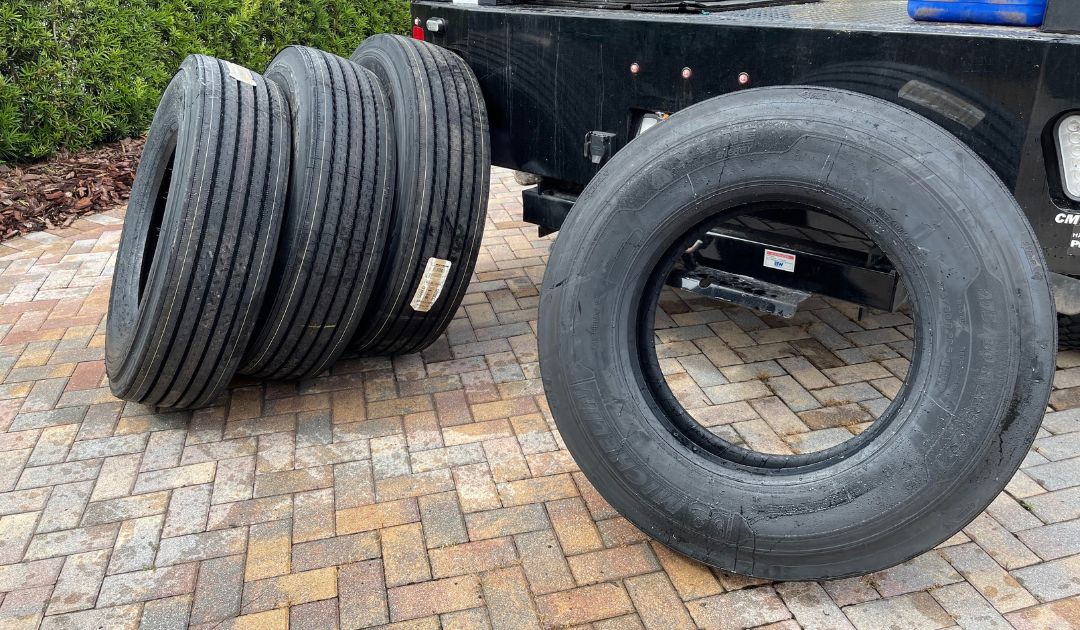Three years into our full time RV living, working and traveling adventures, I find myself more and more involved in the technical and mechanical aspects of our life on the road… like buying RV tires for Charlie-The-Unicorn RV.
As much as I love her, I like buying “new shoes” for our 2016 Entegra Aspire motorhome as much as I always have when buying tires for our cars – although I would prefer buying new shoes for Sherri!
Nevertheless, after talking about RV weight, both on the CAT Scales and four corner weighing, it’s time to circle back and talk about RV tires and safety.
As with most things in life, you don’t know what you don’t know until you figure it out, whether the easy way or the hard way. It feels like we’ve learned about buying and replacing RV tires the hard way over the last three years, so I’m here to share our experience and help other new and/or less technical RV owners, especially if you own or intend to buy a “new to you” (pre-owned) RV.
Here are 5 essential lessons to buying RV tires the right way:
- Know your weights and limits
- Verify your RV tire size
- Locate your date codes
- Check your load range
- Determine your optimal tire pressures
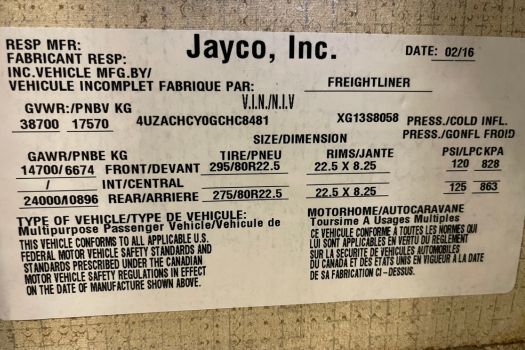
Lesson 1: Know your weights and limits
First things first: Find your “stickers” (Federal Compliance Labels). In a motorhome, these are generally located near the driver’s door or on the wall near the driver’s seat.
The most important information on this label, with respect to your tires, are the GVWR and GAWR:
- GVWR (Gross Vehicle Weight Rating) – the maximum weight limit of the vehicle and everything in it, including passengers, pets, gear, provisions, furniture, accessories, fluids (fuel, propane, water, etc.) and all of your household and personal goods.
- GAWR (Gross Axle Weight Rating) – the maximum weight limit on each axle. It is possible to be under the GVWR and still exceed an axle rating, depending on how your RV is loaded (i.e., the weight distribution on each axle).
You’ll also find your recommended tire sizes (front and rear) next to the Gross Axle Weight Ratings.
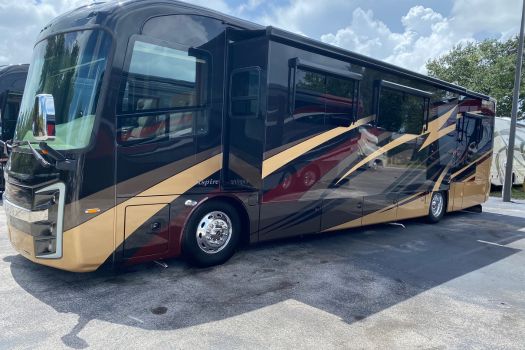
Charlie-The-Unicorn RV’s Tire History
In September 2020, we bought our new-to-us 2016 Entegra Aspire online from a dealer in Florida (Sadly, it was not NIRVC, as this was before we knew about NIRVC). It all worked out, for the most part, with an abundance of research, several video walk-throughs, a thorough independent inspection, and two complete PDI’s (pre-delivery inspections), both virtual and in-person. We knew where to look for our weights and limits.
The dealer transported the coach from Orlando, Florida to Des Moines, Iowa, where we picked her up for our first big road trip, back home to Seattle, Washington. She had less than 5,000 miles on fairly new Michelin tires. The tires all looked and performed great for the 1,800-mile adventure, which you can read about in my blog, RV Road Trip: How We Survived Our First Epic 21 Day Adventure.
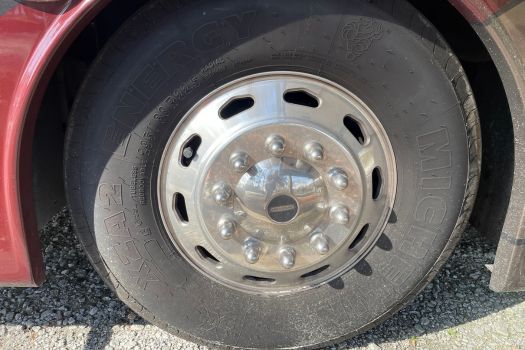
Lesson 2: Verify Your RV Tire Type & Sizes
As I mentioned in Lesson 1, it’s easy to locate your recommended tire sizes on your Federal Compliance Label. The next step is to verify those tire sizes on your motorhome by looking on the sidewalls of your tires. The numbers should match. In the example above, the tire size is: 295/80 R 22.5.
When it comes to determining accurate tire pressures, you’ll also need to know the manufacturer and type of tire you have. In the example above, it’s Michelin XZA2.
In fact, all of your important tire information can be found on the sidewall of your tires, including the tire size, date code, and load range.
This information may not be super critical when you’re taking delivery of a brand-new motorhome at a dealership, but you will eventually need to know it for weighing your RV, tire pressure management, and if/when you need to replace any of your tires.
If you are buying a pre-owned RV, whether from a dealer or a private party, I highly recommend verifying the tire sizes, dates codes, and load range on the sidewalls of all the tires.
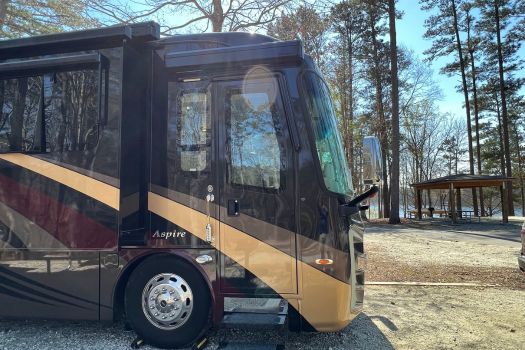
In May 2021, we replaced the front tires before we set out to travel full time across the country. We worked with a trusted tire shop that was part of a well-known franchise in Washington (and all over the West Coast). My husband handled that – before I was fully onboard with the whole idea of full time RVing, quite honestly.
The RV had been sitting for a couple of months or more on concrete at the dealership in the Florida sun and heat. He felt safer driving the RV long distance with brand-new drive tires on the front, but decided we could wait a year to replace the rear tires.
In July 2021, we set off across the country, from Washington State toward our first winter in Florida.
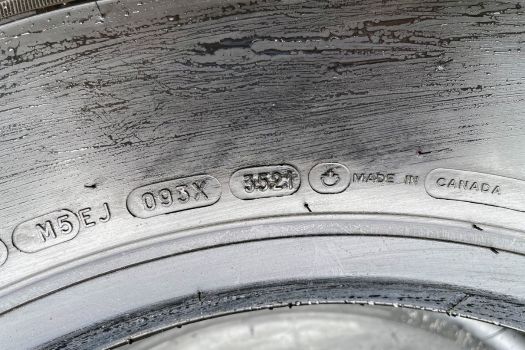
Lesson 3: Locate Your Date Codes
Your date codes can be located on the sidewalls of your tires. It will be a 4-digit number enclosed in a stamped oval at the end of the DOT Code (a longer series of numbers and letters that begins with DOT, as required by the Department of Transportation on all tires).
The date code on the tire above is 3 5 2 1, from our first set of rear replacement tires.
- The first two numbers indicate the week of the year manufactured (35).
- The last two numbers indicate the year of manufacture (2021).
So, these tires were manufactured the 35th week of 2021, which was August 30 to Sept 5, 2021. They were installed October 2021, so those were some fresh tires!
Here’s one of the first things you learn about RV tires: RV tires age out before they wear out…
…even if they look brand-new, with barely worn tread.
…even if they have incredibly low mileage on them.
…even if the RV has been in storage for months or years.
…especially if the RV has been parked outdoors in the sun.
RV tires, whether they have been driven on the road or not, age out between 5 to 7 years from the date they were manufactured (Date Code).
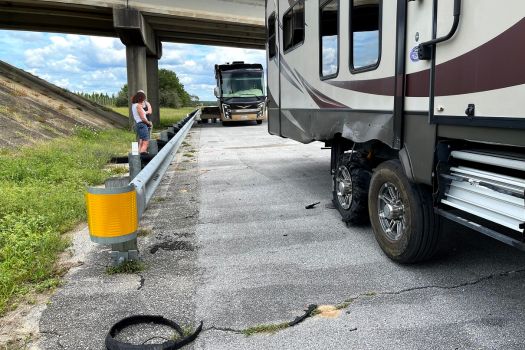
Lesson Learned
In September 2021, we were caravaning with friends, following behind them towing their 2015 Sanibel 5th Wheel on Interstate 10 WB in Florida, heading toward a fun weekend in New Orleans. While we were on the busy side of I-10, one of their rear tires exploded at full speed, ripping away much of the rear panel of their RV. Thankfully, they were able to make it over to the shoulder, and we stopped with them. It was a scary experience!
Their RV Roadside Assistance never showed up. Fortunately, Road Ranger Service Patrol, the Florida Department of Transportation’s emergency roadside assistance service, responded very quickly and helped them with their spare tire so they could move their coach to the nearest rest area.
We found a reputable local mobile truck tire service that came to the rest area and replaced all five tires on the 5th Wheel, including the spare. We all got back on the road later that evening. Instead of continuing on all the way to New Orleans, we decided to stop and enjoy our long weekend together on a beach in Pensacola, Florida.
In October 2021, after that experience, we returned to our RV property in Central Florida and immediately replaced all four rear tires on our motorhome. I was much more involved this time, doing the research and making the arrangements while my husband was working.
RV Tires & Full Time Challenges
I tried to buy tires through the FMCA Tire Buying Discount Service, but it was way too complicated. I had to call local heavy truck tire and service places in the network to find the correct tires and then arrange a time to take the RV to their shop for installation. This is a huge challenge of living full-time in an RV, especially working from home, with Hubs on video conferences all day. It is no easy task to bring your RV in for service.
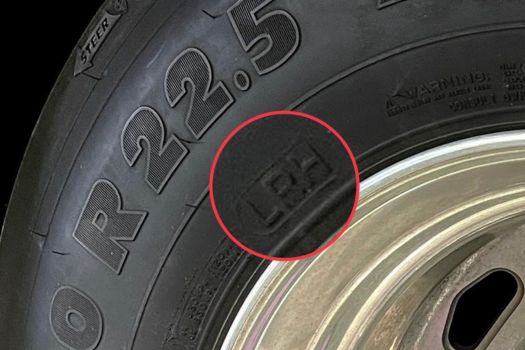
Lesson 4: Check Your Load Range
This is the most elusive, secret little letter you can possibly hope to find on your tire sidewall. But it’s there. And it’s super important.
Load range is a measurement of the inner strength (number of plies/inner layers) and load capacity (maximum weight and PSI) of your RV tires. For larger Class A motorhomes, it is indicated on the sidewall by a single alphabetic letter – typically G (14 ply) or H (16 ply). The higher the letter, or the number of internal plies, the stronger the tire.
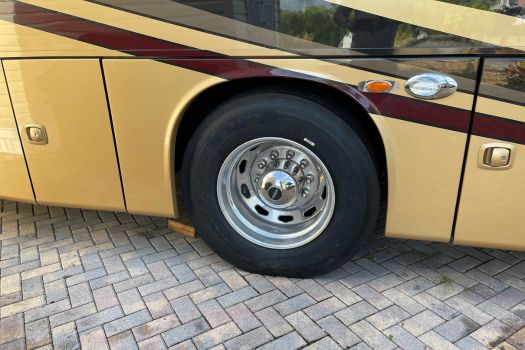
The Secret Letter
In October 2021, we ended up buying four new rear tires from MotorhomeTires.com, an AIM Club Sponsor (Again, this was before we knew anything about NIRVC or the AIM Club). They were very easy to work with. MotorhomeTires.com offers great educational information on their website. We worked with their service advisors to check our tire sizes and date codes.
MotorhomeTires.com sent a local contractor to us for tire installation, which was easy and convenient. In the end, we ordered and paid for Load Range H (16 ply) tires on the invoice, but the installer, in error, installed Load Range G (14 ply). We knew to verify the tire sizes and date codes, but we didn’t know anything about load range… until we got the rig four corner weighed at the FMCA Rally in Perry, Georgia.
When we subsequently discovered the load range error, almost 18 months later, MotorhomeTires.com arranged an immediate replacement of all four LRG tires with new LRH tires at no charge!
I would still recommend MotorhomeTires.com for their great service, convenience, responsiveness, and RV tire education.
As the RV owner, you need to know what’s important in ordering and checking your new tires before installation:
- RV tire size
- Date code
- Load range
Lesson 5: Determine Your Optimal Tire Pressures

Source: michelinrvtires.com
Once you have your weights and tire information, it’s time to go to your tire manufacturer’s Load and Inflation Tables online to determine your optimal tire pressures (PSI) for safe driving.
The example above is the table for our front tires (Michelin XZE 295/80R22.5 H)
- Have your four corner weights handy.
- Find your Load and Inflation Tables online by searching: [Brand] RV inflation tables for your tire manufacturer.
- Read down the left column of the chart to Single or Dual Axle rows in LBS. For front tires (single), locate the column with the weight of your heaviest tire on the axle. Scan up from there to locate recommended PSI. For Rear Tires (dual), locate the column with the weight of your heaviest wheel position (driver or passenger side). Scan up from there to locate recommended PSI.
Note: Never exceed the wheel/rim manufacturer’s maximum air pressure limitation.
That’s it for this three-part series on RV weight and tires! I hope this information and our learning experiences will help you on your way to safe and happy travels in your RV!

Sherri Caldwell is the founder of BooksAndTravelUSA.com, a full-time RV travel blog and book club/U.S. literacy project. Sherri and her husband Russ are currently living, working and traveling full-time in their 2016 Entegra Aspire 40P, Charlie-The-Unicorn RV.

